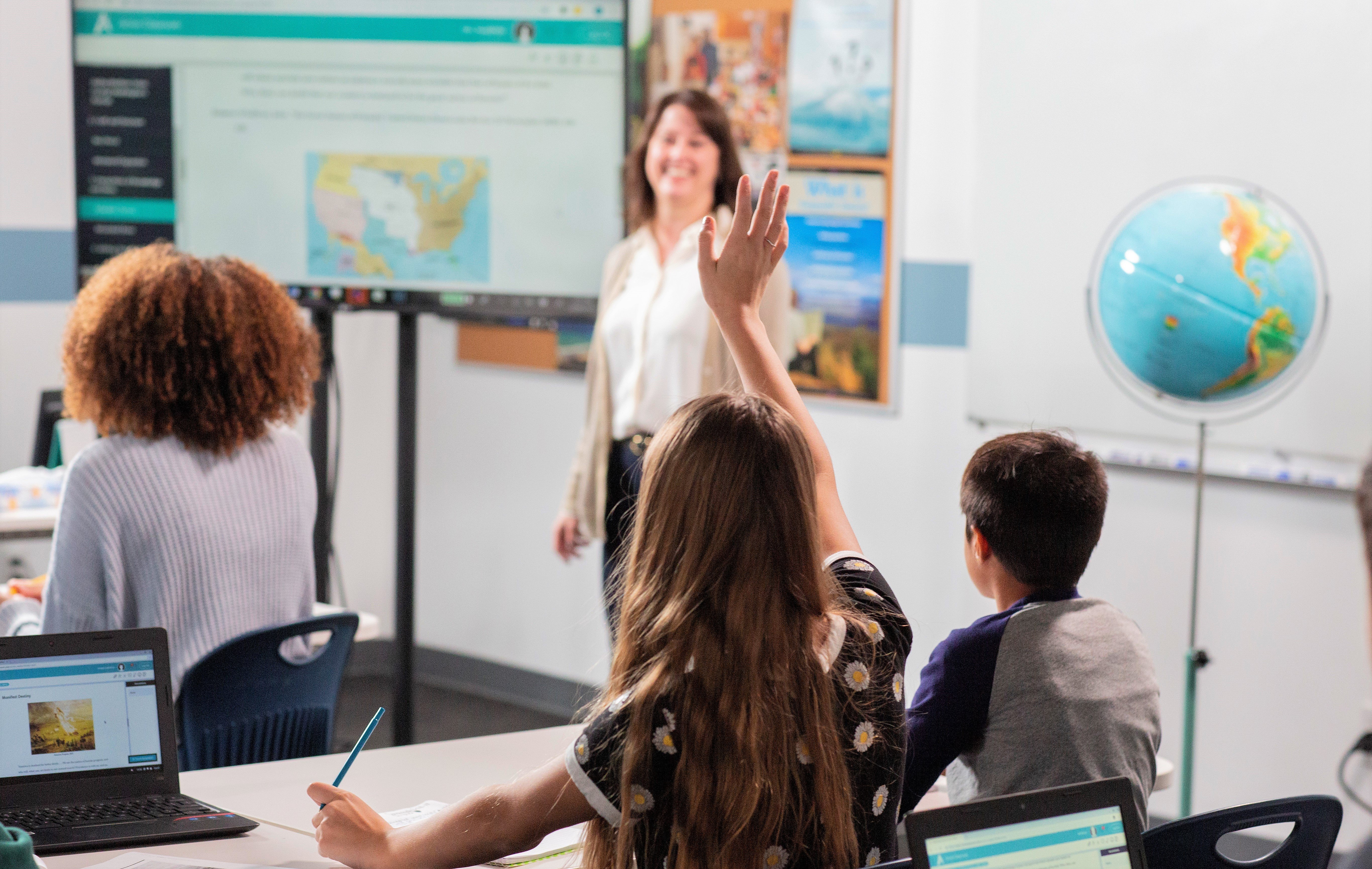
There is a lot of information out there about inquiry-based learning: what it is, how effective it is, and so on. However, a question that many have is, “how can inquiry-based learning be used with digital activities?” Let’s look at some examples of how to combine inquiry-based and digital learning.
Inquiry-based Social Studies
First, it’s worthwhile to know a bit about what inquiry-based learning really is and how to integrate it into social studies curriculum. Dixie Massey’s blog post, How to Introduce Inquiry into Social Studies does a great job of outlining using inquiry in this subject area. The article as a whole is worthwhile to read, especially if you are new to inquiry-based lesson planning. To summarize her thoughts, teachers should:
- begin a lesson with some background knowledge of the topic to develop student curiosity
- foster curiosity, because at the end of the day, students should want to know more through the idea of inquiry,
- allow students to take ownership of their learning, and
- differentiate learning so students develop a learning style unique to them.
In a 2016 article called “What the heck is inquiry-based learning?”, Heather Wolpert-Gawron noted that there are four major steps to incorporate this learning style into lessons. Throughout an inquiry-based lesson, students should:
- develop questions that requires them to “pitch” their ideas using a constructed response,
- complete research on a specific idea or artifact,
- present their culminating findings, and
- reflect upon how and what they learned.
Armed with this information, let’s take a look at how it can be applied to digital activities, especially for social studies. I’ll focus on four separate activities that you might use.
Decision Making Activities
Active Classroom contains a large series of Decision-Making Activities for both World History and United States History. For example, in the “Fall of the USSR” activity, student groups assume the role of Soviet leader Mikhail Gorbachev faced with dealing with the problem of sustaining the failing Soviet economy.
Students are given various possible solutions, and must use inquiry skills in order to analyze the issue involved and speculate as to what the Soviet leader actually did. They must develop questions about what is causing problems with the Russian economy, and then research evidence to determine what course Gorbachev may have taken.
The activity concludes with the teacher revealing the actual policies Gorbachev initiated to help shore up the struggling Soviet economy. Students can also create some sort of “culminating artifact,” either a “policy statement” in which they compare-and-contrast their selected solutions with the actual solutions Gorbachev took. Another idea might be for students role-play Soviet leaders in a forum about economic problems.
(Note: if the teacher does not have access to Active Classroom, they could try their hand at developing their own similar activities. This would include writing an introductory statement, including problems or situations faced, and possible solutions. The activity should conclude with a separate explanation of what was the actual solution or end of the problem.)

Debating the Documents
As with the “decision-making” activities, Active Classroom offers a large selection of “Debating the Documents” activities for both U.S. History and World History. These activities include visual and text-based primary sources that students analyze, and then select which sources they believe best “helps a historian.” They complete several inquiry-based questions analyzing the sources as well as explaining why they selected a particular resource. Students then engage in a class-wide debate regarding the validity of the sources and which ones they selected.
The activity culminates with students writing an essay that answers a document-based question (DBQ). For example, in the activity, “The New Deal: Did It Work?” students analyze various visual primary sources, including New Deal informational posters and editorial cartoons. They also look at speeches and writings of New Deal officials. The culminating question is, “The Great Depression lasted a decade while New Deal program after program failed to do anything to end it. Do you agree or disagree with this statement? Why?”
Government Activators
The Government Activators series from Interact are some of my favorite inquiry-based activities to use in the classroom. Each Activator begins with an introductory historical background essay and a graphic organizer that students use to learn about a government topic (branches of government, civil liberties, politics and elections, etc.). This could be a stand-alone activity, but the Activator takes this a step farther by having students complete an inquiry activity.
For example, in the “Bill of Rights: Procedural Rights” Activator, after completing the graphic organizer, student groups analyze a Supreme Court case, answering questions about that case and completing a case-study activity in which they can create a group presentation about the assigned case, or even reenact the case as jurists.
Basic Economic Concepts and Issues
These activities allow students to learn about economics through inquiry-based instruction. A good example activity is “Arguments For and Against the Affordable Care Act,” where students read background information about ObamaCare, complete various activities to help them understand concepts in the background information and write an essay.
They use inquiry skills by analyzing and making conclusions about various viewpoints on ObamaCare, and then synthesize that information to write the essay. Students then meet together and share ideas and viewpoints about the Affordable Care Act, and either accept the viewpoints of other students, or work to have other students accept their point of view.
The series includes many “current event” types of activities, including “alternatives to gasoline-powered engines”, “amnesty or deportation”, “charter schools”, and “comparing economies and standard of living”. In each instance, student and curiosity is piqued by the topic, and students are assisted in research skills by providing some evidence and encouraging students to complete further research.
Inquiry-based learning is an exciting teaching method to help students learn more effectively. Plus, using online lessons and resources can make this method even more exciting. Give it a try in your classroom today!
Have comments, questions, or other suggestions? Feel free to post responses in the box below.
Not an Active Classroom user?
You can try it now with a free 30-day trial
Michael Hutchison is social studies department chair at Lincoln High School in Vincennes, Indiana. A 39-year teaching veteran, he has written multiple titles for Social Studies School Service as well as lessons for several Ken Burns films, including The War, The Roosevelts: An Intimate History, and The Vietnam War. In 2014, the Indiana Historical Society named him Caleb Mills History Teacher of the Year.
